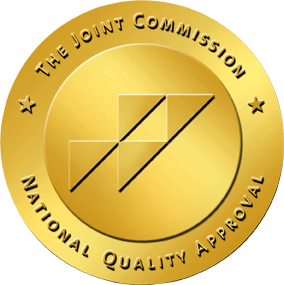Meth overdose, often called “overamping,” happens when someone takes too much crystal meth, causing dangerous effects on the body and mind. Many people wonder, “Can you overdose on meth?” The answer is yes, and knowing the signs and symptoms is important to get help quickly. Meth overdose symptoms can include rapid heartbeat, chest pain, confusion, and seizures. Understanding what meth looks like, how it’s used, and the risks involved can save lives and guide people toward getting the right treatment.
What Is a Crystal Meth Overdose?
A crystal meth overdose, often called “overamping,” happens when someone takes more methamphetamine than their body can handle, leading to dangerous physical and mental effects. Unlike opioid overdoses, overamping doesn’t always involve respiratory failure but can cause severe symptoms like rapid heartbeat, seizures, hallucinations, paranoia, and uncontrollable movements. Overamping can occur regardless of the amount used, influenced by factors like sleep deprivation, dehydration, mixing drugs, or being in stressful environments. Recognizing meth overdose signs early is crucial for getting timely help and preventing serious harm.
Meth Use Statistics
Methamphetamine use continues to be a serious public health issue, with rising rates of addiction, overdoses, and hospitalizations across the country. Here are some alarming statistics:
- About 7% of Americans used meth in the past year, with 184,000 new users annually.
- Meth overdose deaths have increased 7.5 times from 2007 to 2017.
- In 2023, over 37,000 fatal overdoses involved methamphetamine in the U.S.
- Treatment admissions for meth addiction reached over 200,000 in 2019.
- Meth-related emergency visits and hospitalizations remain high in many regions.
How Do People Use Meth?
People use meth in different ways depending on how they want to feel and how quickly they want the effects. Each method carries its own risks and health concerns. Here are the most common methods of meth use:
- Injecting Meth: This method delivers meth directly into the bloodstream for an intense and immediate high but increases risks of infections, vein damage, and overdose.
- Smoking Meth: Smoking meth through a crystal meth pipe produces a quick, powerful high but can cause lung damage and breathing problems.
- Snorting Meth: Snorting meth powder causes effects more slowly than injecting or smoking but can damage the nasal passages and sinuses over time.
What Are the Sign and Symptoms of a Meth Overdose?
Recognizing the signs and symptoms of a meth overdose is crucial for getting timely help and preventing serious harm.
Physical Signs:
- Rapid heartbeat and chest pain
- Difficulty breathing or labored breathing
- High body temperature and sweating
- Seizures or uncontrollable movements
- Dilated pupils and flushed skin
Behavioral Signs:
- Severe agitation or panic
- Paranoia, hallucinations, or psychosis
- Confusion and disorientation
- Aggression or irritability
- Delusional thinking and mood swings
How Much Meth Does It Take to Overdose?
There is no exact amount of meth that causes an overdose because it varies for each person. Factors like body weight, tolerance, method of use, and overall health influence how much meth it takes to overdose. Some people may overdose after a small amount, while others might tolerate more. Because of these differences, it’s important to understand that any use of meth carries risk, and overdose can happen unexpectedly.
Factors That Influence a Meth Overdose
Several factors affect the likelihood and severity of a meth overdose, including the method of ingestion (smoking, injecting, snorting), the presence of other drugs in the system, and individual health conditions. Mixing meth with opioids or other substances greatly increases overdose risk. Other influences include age, metabolism, body mass, and whether the meth is contaminated with dangerous additives like fentanyl. These variables make predicting overdose thresholds difficult but highlight the dangers of meth use.
Self-Assessment: Am I Addicted?
"*" indicates required fields
Contact Us
Ready to Get Help? Get in Touch Today.
"*" indicates required fields
What To Do If Someone is Experiencing an Overdose on Meth
If you think someone is experiencing a meth overdose, it’s important to act quickly and stay calm. Meth overdose can be life-threatening, and immediate action can save a life. Here’s what to do:
- Call 911: Call emergency services right away. Give them as much information as possible about the person’s condition and what substances they may have used.
- Use Narcan if Available: If you have Narcan (naloxone), use it—even if you’re not sure the person has taken opioids. Many meth users also use other drugs, and Narcan is harmless if opioids aren’t present. It can reverse opioid overdose symptoms if they are mixed with meth.
- Stay Until Help Arrives: Stay with the person and try to keep them awake, calm, and safe from injury. If they’re having a seizure, move objects away and do not try to restrain them. If they are overheating, try to cool them down with a damp cloth or fan. Monitor their breathing and be ready to give first aid if needed.
Your quick response and support can make a critical difference during a meth overdose emergency.
What Happens After a Meth Overdose
After a meth overdose, it’s crucial for the individual to receive medical care and then enter a treatment program to address their addiction and prevent future overdoses. Meth treatment helps manage withdrawal symptoms, repair physical and mental health, and build skills for long-term recovery.
Find a Meth Treatment Program
Choosing the right treatment program is key to successful recovery. Here are two common approaches used in meth addiction treatment:
- Psychotherapy: This includes individual and group counseling that helps people understand their addiction, develop coping strategies, and change harmful behaviors.
- Holistic Therapy: These therapies focus on healing the whole person through activities like yoga, meditation, art therapy, and nutrition, supporting mental, emotional, and physical well-being.
Is Meth Addiction Recovery Possible?
Meth addiction recovery is possible, though it can be challenging due to intense cravings and high relapse rates. Success is more likely with professional treatment, including medical detox, medication-assisted treatment (MAT), and behavioral therapies, which help manage withdrawal and address the mental aspects of addiction. Structured programs and ongoing support significantly improve the chances of long-term sobriety and rebuilding a healthier life.
If you or a loved one is struggling with meth addiction, Vogue Recovery Center offers compassionate, expert care to guide you toward lasting recovery. Don’t wait—reach out today to start your journey to a healthier, drug-free life.
Questions about treatment options?
Our admissions team is available 24/7 to listen to your story and help you get started with the next steps.
References:
- What Are the Signs of a Meth Overdose? Here’s When to Call 911 – GoodRx
- Methamphetamine Toxciticty – NIH
- “It’s called overamping”: experiences of overdose among people who use methamphetamine – PubMed
- Methamphetamine Plan Implementation Report – White House
- Methamphetamine – NIDA
- Methamphetamine – NIH
- My Experience and Recovery from Meth Addiction – NIH
- What is naloxone? – NIDA
Dr. Anjali Talcherkar
Latest posts by Dr. Anjali Talcherkar (see all)
- Finding the Best Rehab in Las Vegas: A Guide to Recovery Options - October 13, 2025
- How Long Does Substance Abuse Counseling Take? - June 9, 2025









